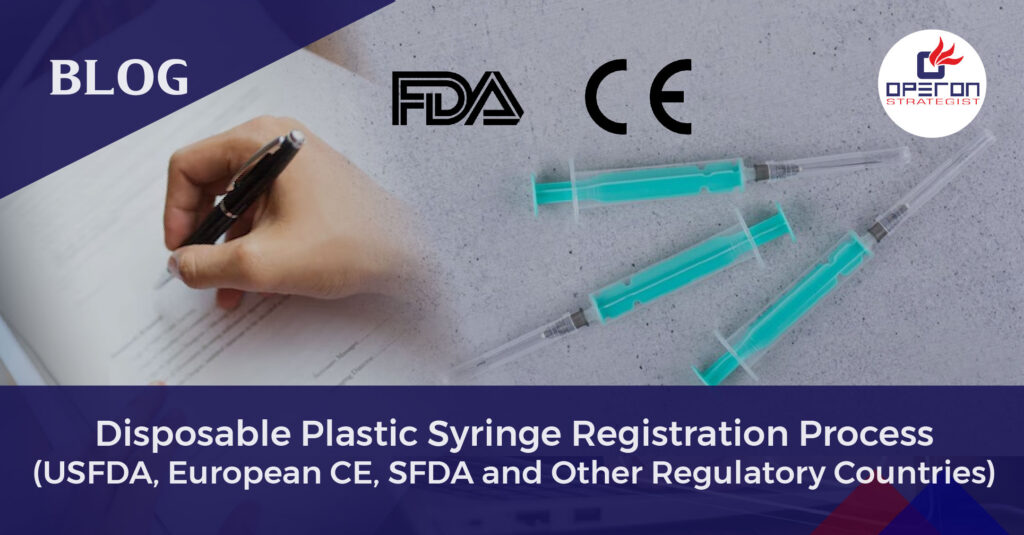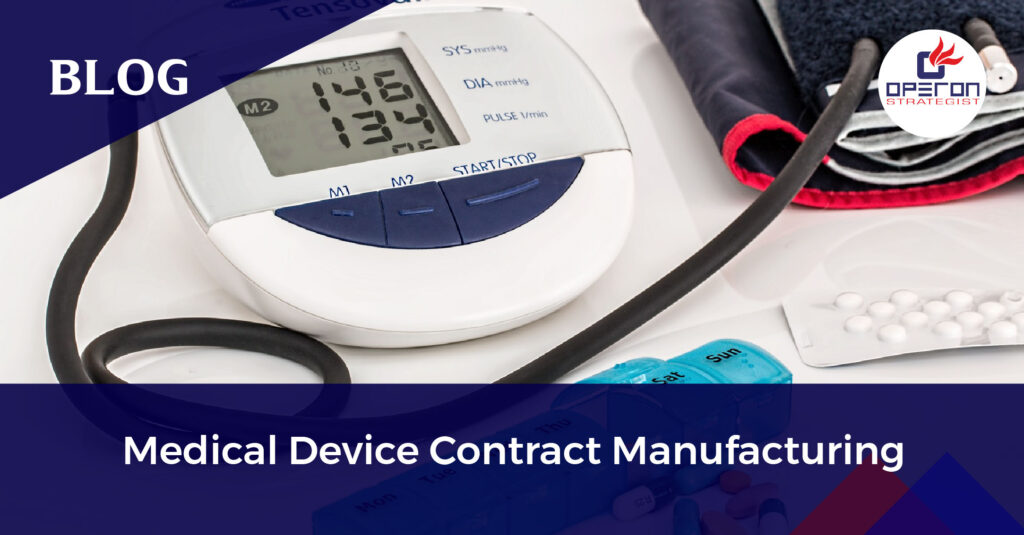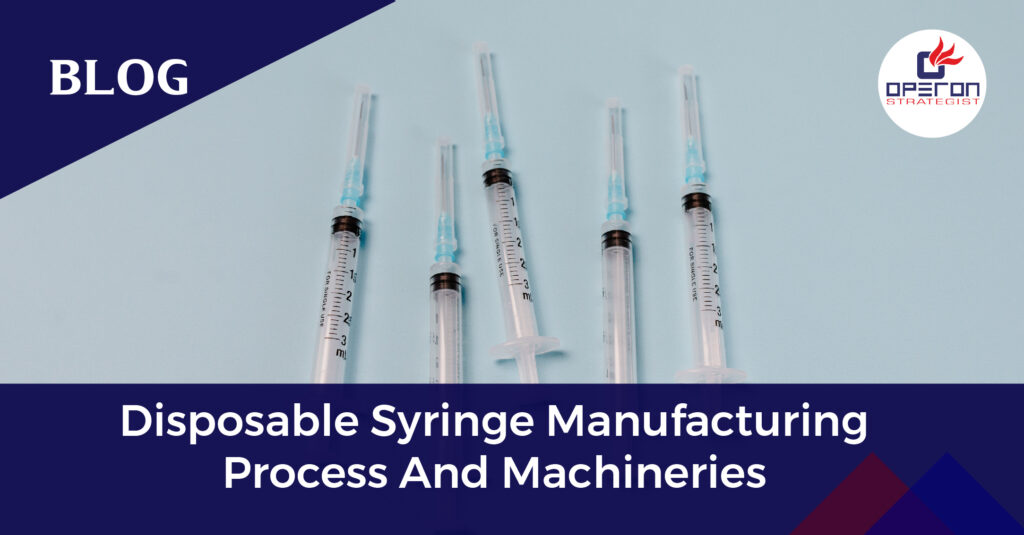Disposable Plastic Syringe Registration - Overview
Disposable plastic syringes have revolutionized medical practices worldwide by offering a sterile, single-use solution for administering medications and vaccines. These syringes are crucial in preventing cross-contamination and ensuring patient safety. This blog delves into the meticulous manufacturing process of disposable plastic syringes, highlighting the steps involved, the materials used, and the quality control measures that ensure their efficacy and safety.
Read more about the Disposable Syringe Manufacturing Process
Looking For a Plastic Syringe Registration Process?
Registration of Disposable Plastic Syringes in Various Countries
Registering disposable syringes in major countries involves navigating complex regulatory frameworks to ensure these medical devices meet safety and efficacy standards. Here’s a look at the registration process in several key markets:
- Regulatory Body: U.S. Food and Drug Administration (FDA)
- Regulation: Medical devices, including disposable syringes, are regulated under the Federal Food, Drug, and Cosmetic Act (FD&C Act).
- Classification: Disposable syringes are typically Class II medical devices, requiring special controls.
- Submission:
– 510(k) Premarket Notification: Most disposable syringes require a 510(k) submission to demonstrate that they are substantially equivalent to a legally marketed predicate device.
– Labeling Requirements: Devices must comply with FDA labeling regulations, including instructions for use and safety information.
– Quality System Regulation (QSR): Manufacturers must adhere to QSR, which encompasses design controls, production processes, and post-market surveillance.
- Regulatory Body: European Medicines Agency (EMA) and national competent authorities
- Regulation: Medical devices are regulated under the Medical Device Regulation (MDR) (EU) 2017/745.
- Classification: Disposable syringes are generally classified as Class IIa devices.
- Submission:
– Conformity Assessment: Involves a notified body assessment for Class IIa devices, including a quality management system audit (ISO 13485) and technical documentation review.
– CE Marking: Devices must bear the CE mark, indicating compliance with EU standards.
– Post-Market Surveillance: Continuous monitoring and reporting of any adverse events.
- Regulatory Body: Central Drugs Standard Control Organization (CDSCO)
- Regulation: Medical devices are regulated under the Medical Device Rules, 2017.
- Classification: Disposable syringes are typically classified as Class B devices.
- Submission:
– Registration Application: Requires submission of technical documentation, including device master file, quality management system certification, and performance data.
– Import License: For imported syringes, an import license is required.
– Clinical Data: May require clinical evaluation or data based on risk assessment.
Saudi Arabia (SFDA Registration)
- Regulatory Body: Saudi Food and Drug Authority (SFDA):
- Process: Disposable syringes are regulated as medical devices by the SFDA. Manufacturers must obtain a Medical Device Marketing Authorization (MDMA).
- Requirements: Detailed technical documentation, including design, materials, manufacturing process, and labeling, must be provided. Clinical data may be required.
- Review Time: SFDA reviews applications within several months.
Get Expert Consultation Services for Medical Device Registration Compliance
Components Required for Disposable Plastic Syringes Manufacturing
The manufacturing of disposable plastic syringes involves several key components, each serving a specific purpose to ensure the syringe functions correctly and safely. Here are the primary components required:
- Barrel
– Material: Polypropylene (PP)
– Description: The barrel is the main body of the syringe, a hollow cylindrical tube that holds the liquid medication. It is usually transparent, allowing healthcare providers to see the contents and measure the dosage accurately.
- Plunger
– Material: Polypropylene (PP)
– Description: The plunger is a piston-like component that fits inside the barrel. It is pushed or pulled to draw in or expel liquid from the syringe. The plunger must move smoothly and create an airtight seal within the barrel.
- Needle
– Material: Stainless steel
– Description: The needle is a thin, hollow tube that penetrates the skin to deliver the medication. It needs to be sharp, strong, and corrosion-resistant.
- Lubricant
– Material: Silicone oil
– Description: A small amount of medical-grade silicone oil is often applied to the inside of the barrel and the plunger to ensure smooth movement.
- Sterilization Materials
– Materials: Ethylene oxide gas, gamma radiation, or steam (depending on the method used)
– Description: Sterilization materials and methods are used to ensure the syringes are free from any microbial contamination before packaging.
- Packaging Materials
– Materials: Medical-grade paper and plastic film
– Description: Each syringe is individually packaged in sterile packaging to maintain sterility until it is used. Bulk packaging materials are used for shipping and distribution.
- Additional Considerations
– Molds: High-precision molds made of steel or aluminum are essential for the injection molding process.
– Assembly Machinery: Automated assembly lines to ensure precise and efficient assembly of the syringe components.
– Quality Control Instruments: Devices for inspecting and testing the syringes to ensure they meet strict medical standards.
We are Experts in Providing Medical Device Turnkey Project Consultation Services!
Role of Operon Strategist
Operon Strategist is a leading consultancy firm specializing in regulatory affairs and project management for medical device manufacturers. In the context of disposable plastic syringe manufacturing, Operon Strategist plays a critical role in ensuring compliance with regulatory standards, optimizing manufacturing processes, and managing project timelines. Contact us for further details.
- adminhttps://operonstrategist.com/author/admin-2/
- adminhttps://operonstrategist.com/author/admin-2/
- adminhttps://operonstrategist.com/author/admin-2/
- adminhttps://operonstrategist.com/author/admin-2/




